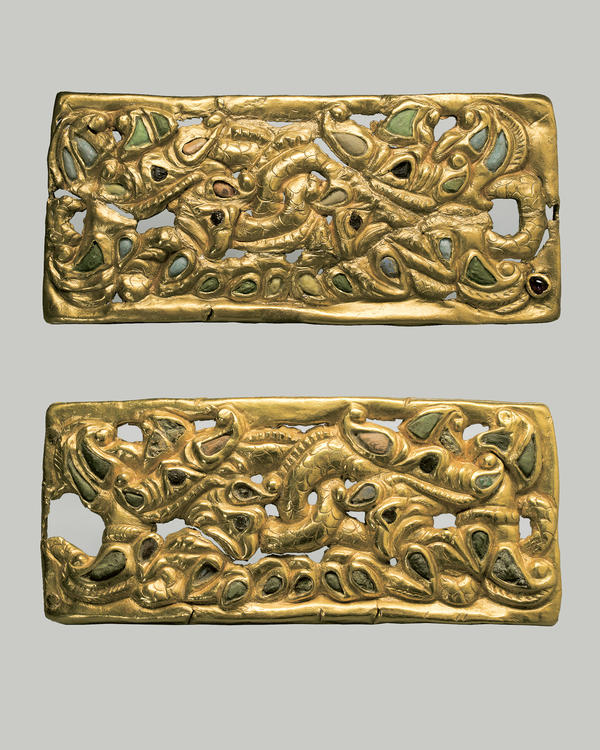The belt plate was used to decorate a belt. This accessory is made of gold and adorned with an elaborate ornamental pattern featuring fantastic creatures. In a rectangular frame, the ancient artist showed the scene of a fight between two wolf dragons and two griffins. The master carefully worked out the details, embossing the scales and serrated ridges on snake-like dragons’ bodies and highlighting the folds of skin on their faces and thick rows of teeth on their upper jaws. The bodies of griffins and dragons are inlaid with inserts of pink coral, green and blue glass.
The edges of the plates are bent inward. On the back, loops are soldered, to fasten the plate to the belt. The loop on lower right corner of one of the plates is not soldered, but fastened with a rivet that is encrusted with an almandine insert on front side.
The edges of the plates are bent inward. On the back, loops are soldered, to fasten the plate to the belt. The loop on lower right corner of one of the plates is not soldered, but fastened with a rivet that is encrusted with an almandine insert on front side.




